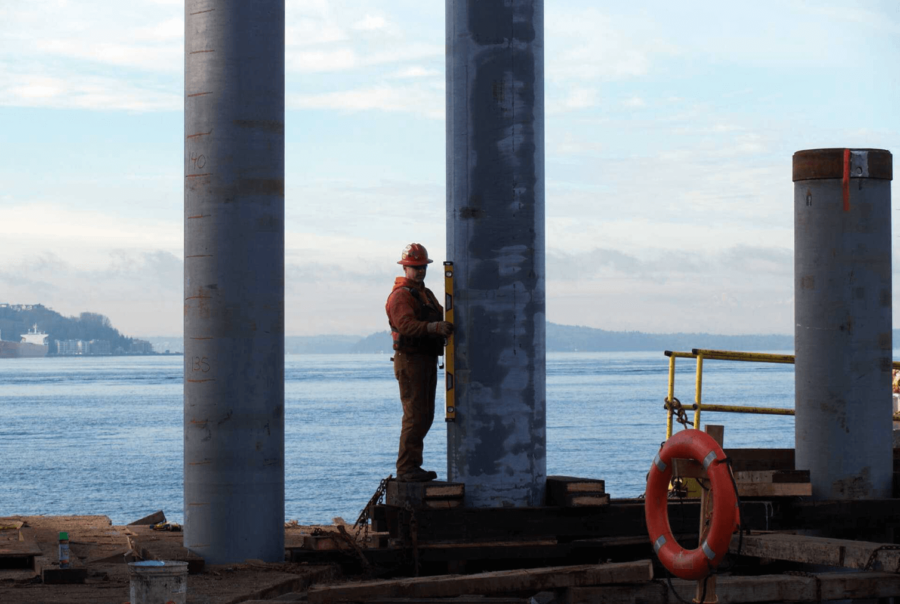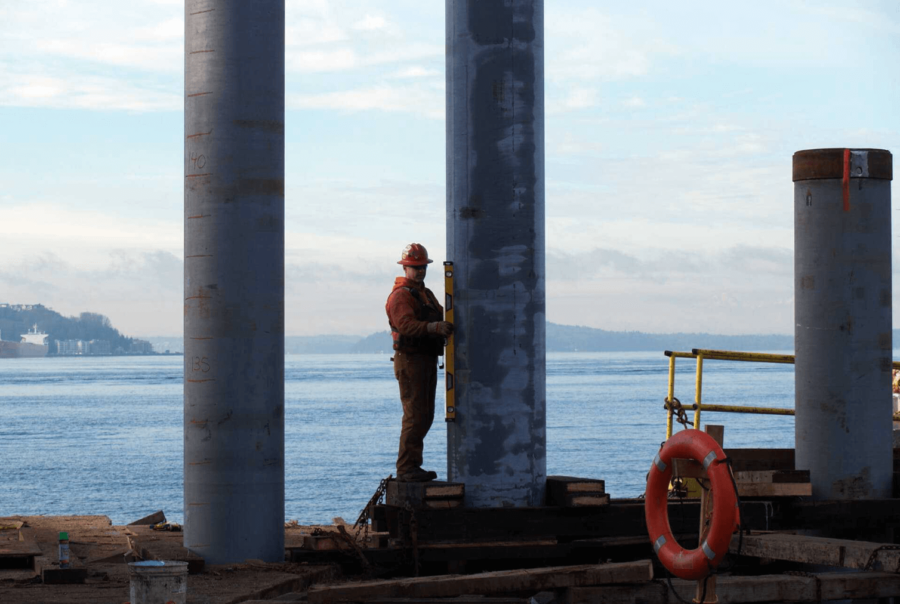Steel pipe piles are popular when building structures that withstand heavy loads and challenging conditions. Whether for building bridges, ports or offshore installations, steel pipe pile provides unmatched strength, durability and versatility.
Let’s discuss steel pipe piles’ different types and sizes, their advantages and the installation process. And for those looking for reliable pipe pile suppliers, we’ll also provide some tips on how to find the best ones.

Firm Foundation: Installation of Steel Pipe Pile
The installation of a steel pipe pile involves driving that pile into the ground with the use of a pile driver. This process requires careful planning and execution to ensure it is seated correctly and supports the required load.
Before driving the pile, you must assess the soil conditions and load requirements to determine the appropriate length and diameter of that pile. The soil should be strong enough to support it and resist lateral and vertical forces.
The pile is then driven into the ground using a pile driver. The impact of the driver causes it to penetrate the soil and reach the required depth. Once it is in place, the ground is compacted to provide additional support.
Types of Steel Pipe Pile: Which One to Choose?
There are different types of steel pipe piles, each with unique features and benefits. Some of the most common types include:
Unplugged Open-Ended Pile: Pipe pile suppliers say this type of pile is open at both ends and can penetrate soft soils or soils with much water. The loose ends allow water to enter this pile and create a hydraulic lock, providing additional support.
Plugged Open-Ended Pile: This type of pile is like the unplugged open-ended option but has a cap at the top, preventing water from entering. That is useful for soil conditions where water could cause instability.
Bottom Plate Steel Pipe: This pile type has a flat plate at the bottom, which provides additional bearing capacity. People use it for structures that require a large amount of support, such as high-rise buildings.
Steel Pipe with Rock Shoe: It comprises a steel shoe at the bottom, filled with rock or other material to provide additional support. That is useful for soil conditions with loose or soft soils.
Size Matters: Different Sizes of Steel Pipe Pile
Steel pipe pile comes in various sizes, which can be customized to meet specific project requirements. The diameter typically ranges from 10 to 120 inches, while the length can vary from 20 feet to over 100 feet.
The load requirements and soil conditions determine the pile size. For example, people use larger-diameter piles for structures requiring much support and smaller ones for lighter options.
Advantages of Using Steel Pipe Pile
There are several advantages to using steel pipe piles in construction projects. Some of the most notable benefits include:
-
- Strength and Durability: The steel pipe pile is solid and durable, making it ideal for structures that withstand heavy loads and challenging conditions.
- Versatility: It can be customized to meet specific requirements, making them versatile for various construction projects.
- Resistance to Corrosion: They resist corrosion, making them ideal for structures exposed to harsh environments.
- Cost-Effective: While the initial cost of a steel pipe pile may be higher than other materials, its strength and durability make it a cost-effective option in the long run.
Choosing the Right Pipe Pile Suppliers
When finding reliable pipe pile suppliers, there are a few things to remember.
-
- Look for suppliers with a proven track record of delivering high-quality products and exceptional customer service. Check their reputation and customer reviews online and ask for references from past clients.
- Ensure the supplier has a wide range of steel pipe pile sizes and types. That will ensure you find the right product for your project’s needs.
- Consider the supplier’s delivery times and logistics capabilities. A supplier that can deliver your steel pipe pile on time and in the right location can help you avoid project delays and additional costs.
- Ensure that the pipe pile supplier has a good understanding of the local regulations and permits required for the installation of steel pipe piles. That will help ensure your project complies with local laws and regulations.
Bigfoot Pipe & Piling: Your Trusted Pipe Pile Supplier
If you’re looking for a reliable pipe pile supplier, look at Bigfoot Pipe & Piling. We have built a reputation for delivering high-quality steel pipe piles and exceptional customer service.
At Bigfoot Pipe & Piling, we understand the importance of timely delivery and logistics. We have established strategic partnerships with carriers and logistics providers to ensure your steel pipe pile is delivered on time and in the correct location. Our products are manufactured to the highest standards and can provide unmatched strength and durability.
Ready to take on your next dredging project? Bigfoot Pipe And Piling has everything you need to make it a success. We’ve got you covered, from top-quality used dredge pipes to a wide range of piling supplies. Don’t let the search for the right equipment slow you down. Contact us today and see how our products can streamline your dredging operations.

